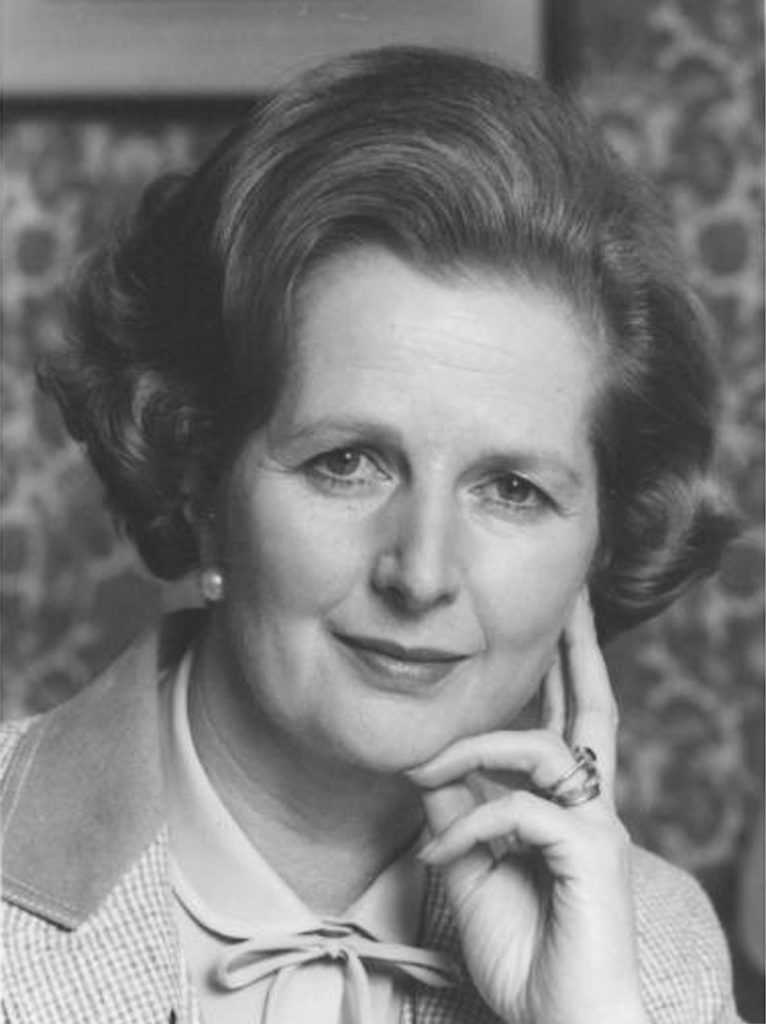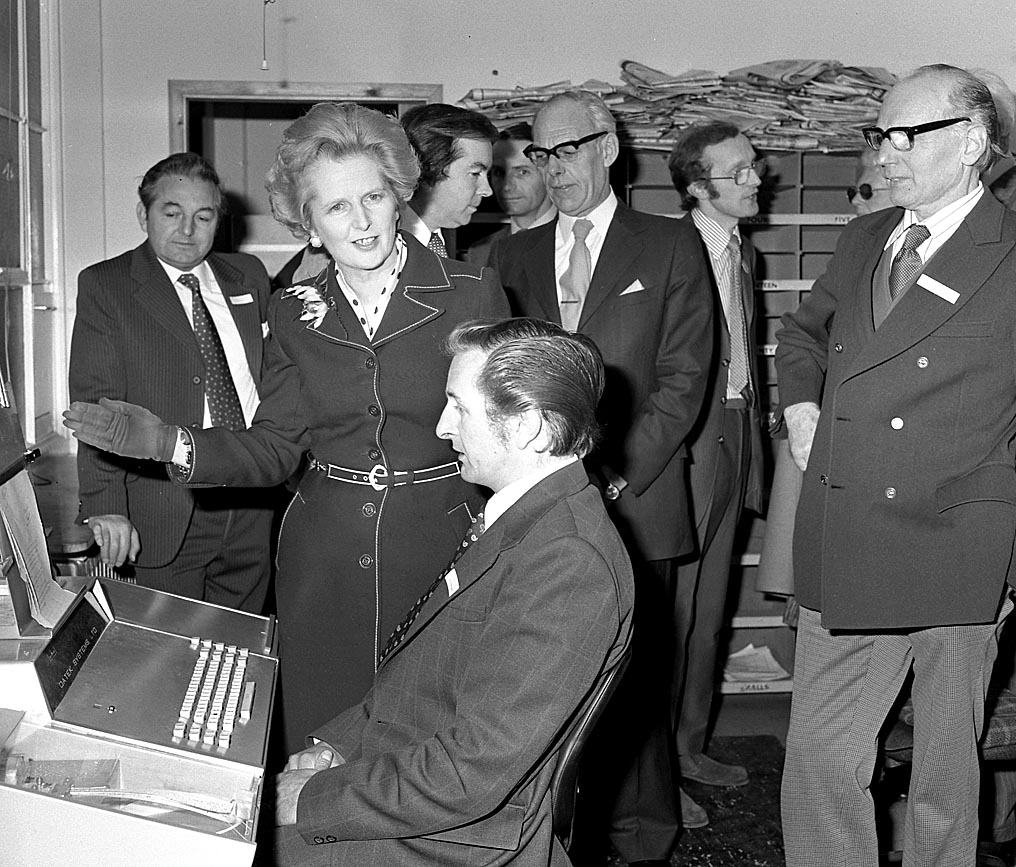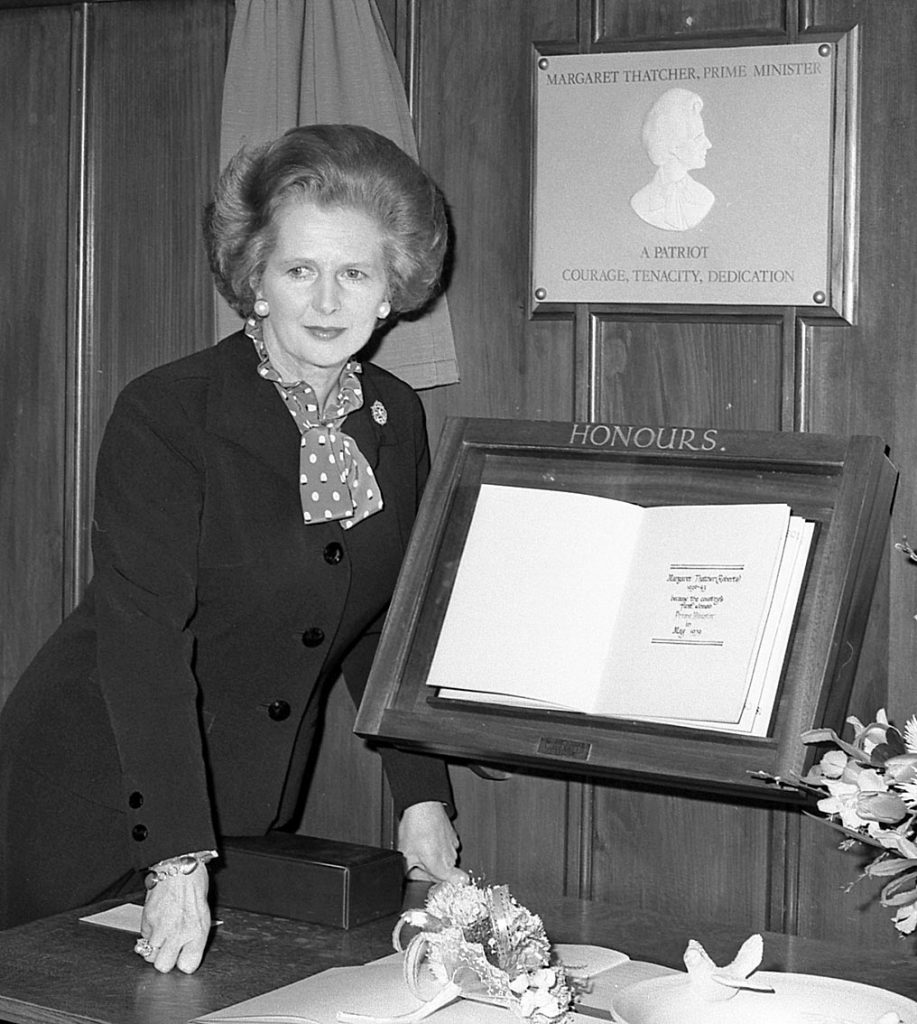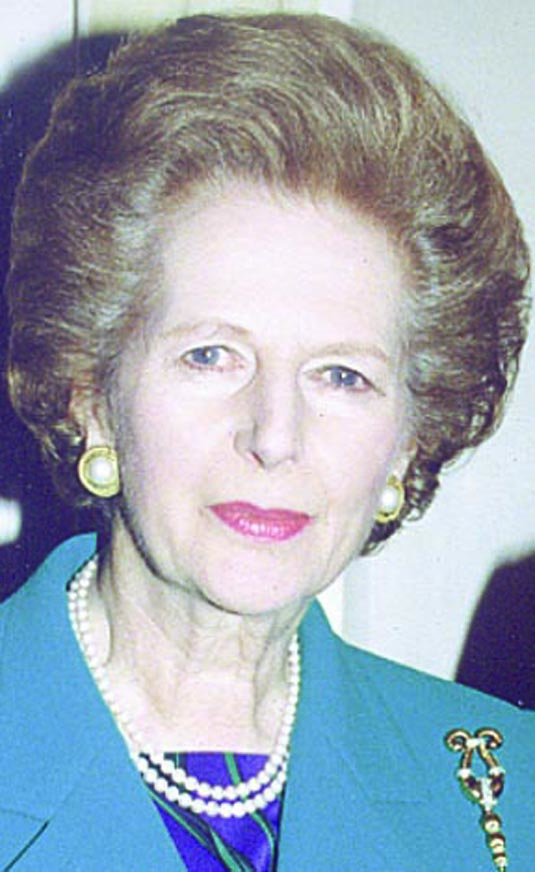
Margaret Hilda Thatcher (1925- 2013)
BORN in Grantham at her father’s corner shop on North Parade, Margaret Hilda Roberts became Britain’s first woman Premier.
As Margaret Thatcher she won three terms of office and led a Conservative Government for more than 11 years, from May 1979 to November 1990.
She was a political figure of world stature, and the founder of Thatcherism as she took the country through the 1980s.
Always, controversial, she hit the headlines in the 1970s for ending free school milk when a member of Edward Heath’s Government and was labelled Milk Snatcher Thatcher.
But strong in leadership, while still showing her feminine side as was seen in tears during the 1982 Falkland Conflict she had taken the country into.
Russian leader Mikhail Gorbachev hailed her as the Iron Lady.
She was the daughter of Alfred and Beatrice. Beatrice was the daughter of Phoebe Stephenson of South Parade, a seamstress and dressmaker.
Margaret and her elder sister Muriel were brought up in the shop environment. The young Margaret attended Huntingtower Road Primary School – her father had a shared shop business opposite the school – and then Kesteven and Grantham Girls’ School where she became joint head girl in 1942-42. She enjoyed the piano, field hockey, poetry recitals, swimming and walking
Her political beginnings were as a message runner at Sir Victor Warrender’s Belton House Conservative camp in the 1935 election.
In the 1942 election she helped Sir Athur Longmore and three years later George Worth.
Although first, she joined Lyons with her chemistry degree from Somerville College, Oxford, helping develop soft ice cream by injecting air.
She was President of the Oxford University Conservative Association in 1946.
She returned to Oxford for a law degree and became a barrister.

Twenty years later she achieved what even she had said could not be achieved, she became the country’s first woman Prime Minister
At a dinner following her formal adoption as Conservative candidate for Dartford (which she lost) in February 1951 she met Denis Thatcher, a successful and wealthy divorced businessman, whom she later married.
Her career in politics began after leaving Grantham and Oxford University, becoming MP for Finchley in 1959.
Edward Heath appointed her Secretary of State for Education and Science in his 1970 government. In 1975 Thatcher defeated Heath in the Conservative Party leadership election and became Leader of the Opposition, as well as the first woman to lead a major political party in the United Kingdom. She became prime minister after winning the 1979 general election.
After entering 10 Downing Street, her political philosophy and economic policies emphasised deregulation (particularly of the financial sector), flexible labour markets, the privatisation of state-owned companies, and reducing the power and influence of trade unions.
Thatcher’s popularity during her first years in office waned amid recession and high unemployment, until economic recovery and the 1982 Falklands War brought a resurgence of support.
Yet her Community Charge (popularly referred to as “poll tax”) was widely unpopular and her views on the European Community were not shared by others in her Cabinet. She resigned as Prime Minister and party leader in November 1990.

Thatcher returned to the backbenches as MP for Finchley for two years after leaving the premiership.
She retired from the House at the 1992 election, aged 66, saying that leaving the Commons would allow her more freedom to speak her mind.
After leaving the House of Commons, Thatcher became the first former Prime Minister to set up a foundation; it closed down in 2005 because of financial difficulties.
She wrote two volumes of memoirs, The Downing Street Years (1993) and The Path to Power (1995).
In July 1992, Thatcher was hired by the tobacco company Philip Morris as a “geopolitical consultant” for $250,000 per year and an annual contribution of $250,000 to her foundation. She also earned $50,000 for each speech she delivered.
She received a life peerage as Baroness Thatcher, of Kesteven in the County of Lincolnshire, which entitled her to sit in the House of Lords.
In South Africa, a nectarine is named after her.
Thatcher’s tenure of 11 years and 209 days as Prime Minister was the longest since Lord Salisbury (13 years and 252 days in three spells starting in 1885), and the longest continuous period in office since Lord Liverpool (14 years and 305 days starting in 1812.





Leave a Reply
You must be logged in to post a comment.